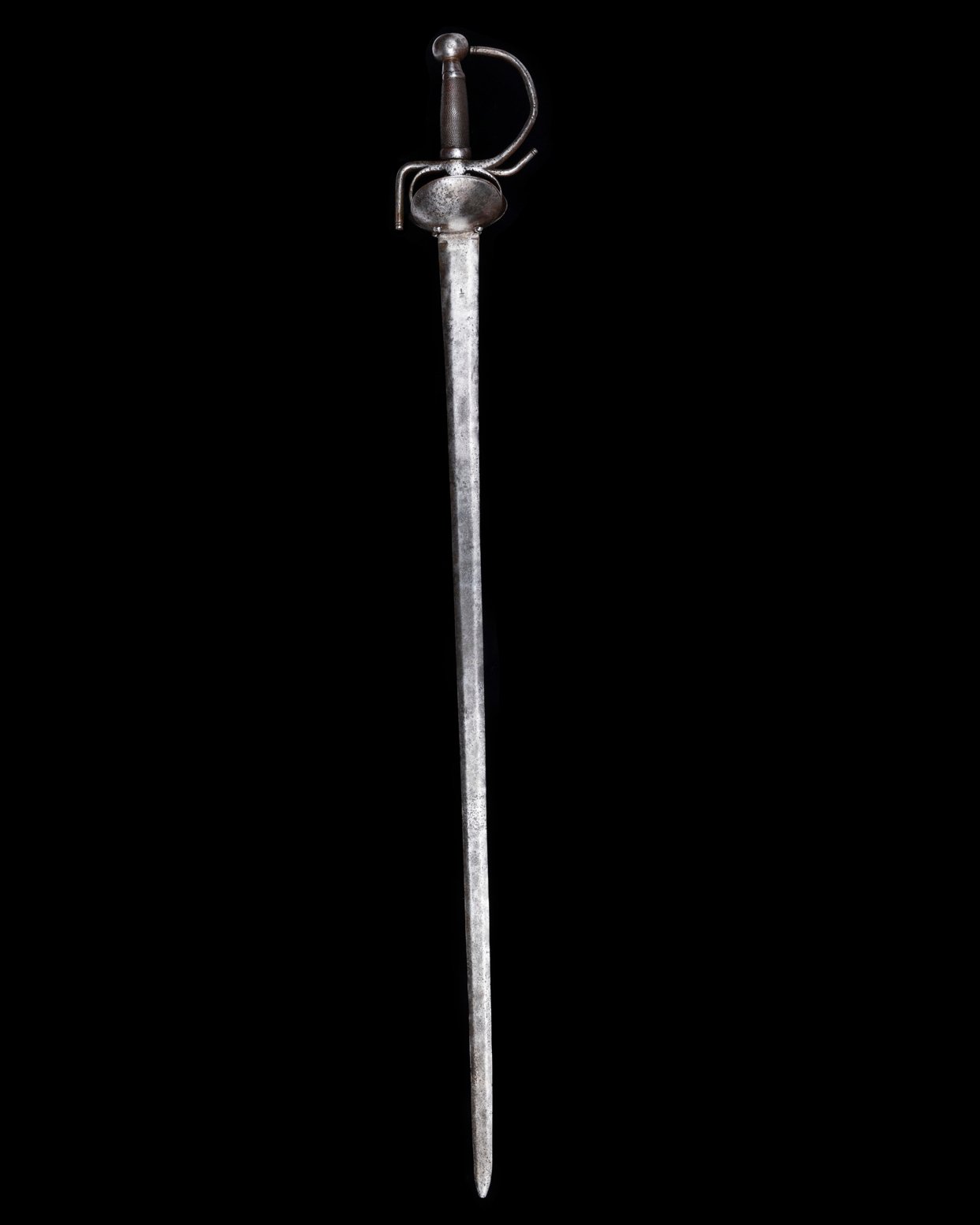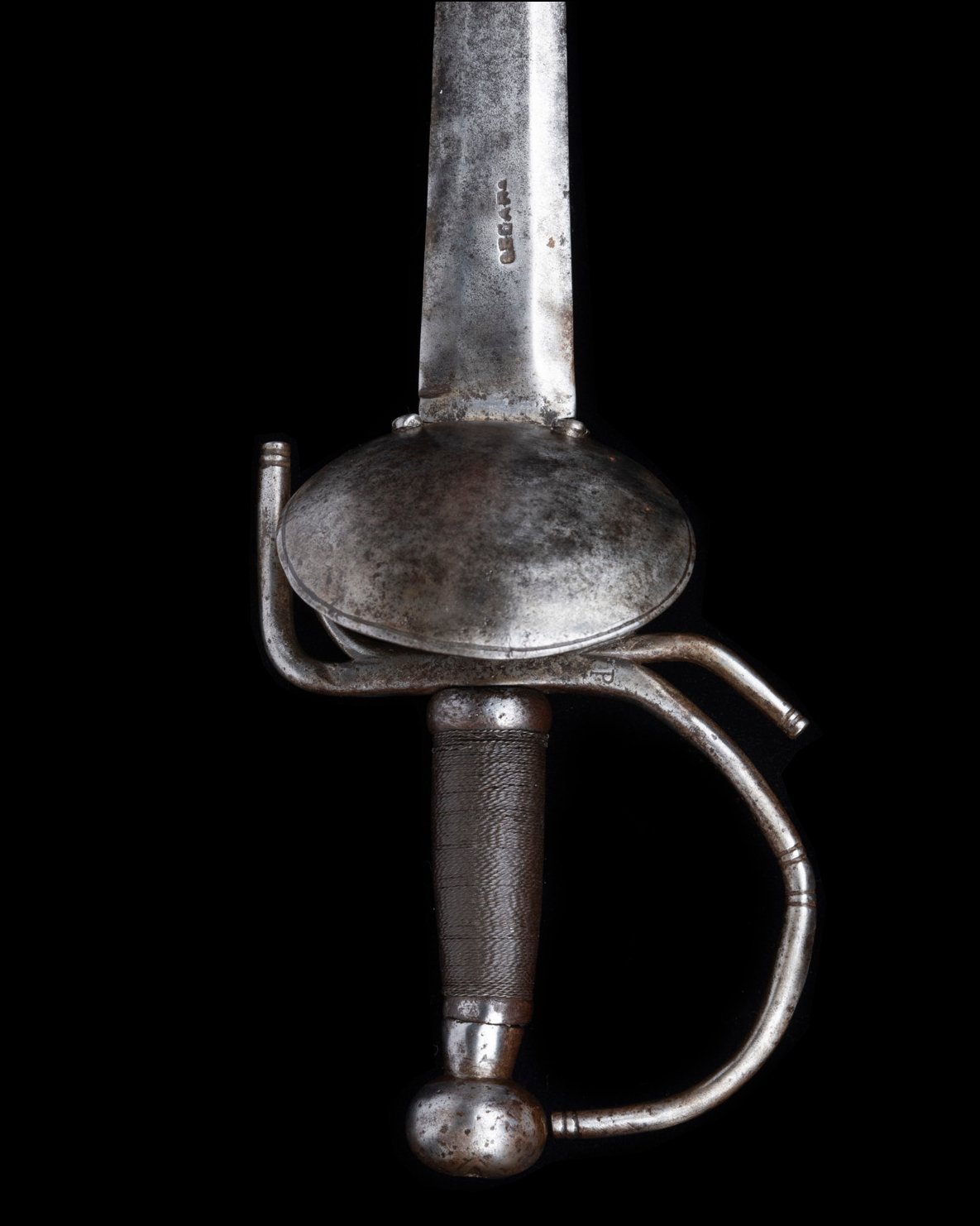17th century Spanish Bilbo
Spanish Bilbo Broadsword, Second Half 17th century. Good condition with some age related staining. No rust or pitting and the blade, guard and hilt is solid with no movement.
Featuring iron hilt of round-section bars and large upturned shell guards with incised line border around the edges, recurved quillons with turned knob finials, knucklebow with turned central knob and finial. Small bun-shaped pommel, with sliver wire wrap, longitudinal iron bars, and ferrules top and bottom. inscribed “GIO KNEGT” on one side and stamped P on the knucklebow. The Knecht Family of Solingen bladesmiths dates back at least to the first quarter of the 17th century and produced generations of blade makers. The name Geo Knecht, in various spellings, appears on a number of early Spanish broadswords of this type
Popular in the Spanish colonies, they were commonly used as naval swords
Spanish Bilbo Broadsword, Second Half 17th century. Good condition with some age related staining. No rust or pitting and the blade, guard and hilt is solid with no movement.
Featuring iron hilt of round-section bars and large upturned shell guards with incised line border around the edges, recurved quillons with turned knob finials, knucklebow with turned central knob and finial. Small bun-shaped pommel, with sliver wire wrap, longitudinal iron bars, and ferrules top and bottom. inscribed “GIO KNEGT” on one side and stamped P on the knucklebow. The Knecht Family of Solingen bladesmiths dates back at least to the first quarter of the 17th century and produced generations of blade makers. The name Geo Knecht, in various spellings, appears on a number of early Spanish broadswords of this type
Popular in the Spanish colonies, they were commonly used as naval swords
Spanish Bilbo Broadsword, Second Half 17th century. Good condition with some age related staining. No rust or pitting and the blade, guard and hilt is solid with no movement.
Featuring iron hilt of round-section bars and large upturned shell guards with incised line border around the edges, recurved quillons with turned knob finials, knucklebow with turned central knob and finial. Small bun-shaped pommel, with sliver wire wrap, longitudinal iron bars, and ferrules top and bottom. inscribed “GIO KNEGT” on one side and stamped P on the knucklebow. The Knecht Family of Solingen bladesmiths dates back at least to the first quarter of the 17th century and produced generations of blade makers. The name Geo Knecht, in various spellings, appears on a number of early Spanish broadswords of this type
Popular in the Spanish colonies, they were commonly used as naval swords




